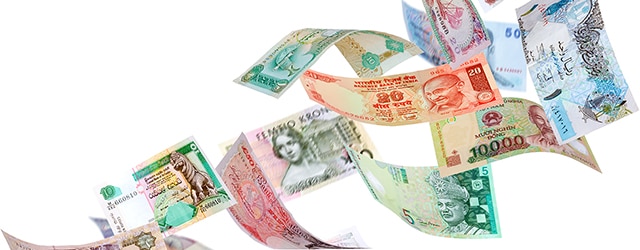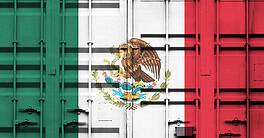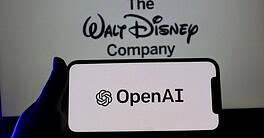Financial institutions are pushing the benefits of going cashless, but many users remain wary.

Money may “make the world go ’round,” but for an increasing number of businesses and consumers, money no longer means paper notes and metal coins. The electronification of money is well and truly underway, thanks to a host of electronic-payment mechanisms, including cards (debit, credit and contactless), mobile payments and digital wallets (Apple Pay, M-PESA, Alipay).
The rapid proliferation of mobile devices combined with the introduction of mobile-banking services has added rocket fuel to the trend. In the age of Uber, you can pay for your ride within the mobile app you used when making the booking; even tiny retailers—such as UK coffee shops or street vendors in China—increasingly eschew cash. “The growth in the use of mobile technology and digital payments means we now carry less cash in our day-to-day lives,” observes Alison Wilkes, head of payments at financial-software vendor FIS. “It’s easier to make a payment using a card or mobile device.”
Electronic money providers, both bank and nonbank, are certainly promoting the cause. In their 2019 Digital Money Index, which ranks countries based on their “digital money readiness,” Citi and Imperial College Business School’s Centre for Global Finance and Technology estimate that reduced cash handling costs could save businesses billions of dollars. Governments benefit too, since digital money is trackable. The US government loses $400 billion to $600 billion annually in underreported taxes, at least half of which is “directly enabled” by a cash economy.
One advantage for businesses of having notes and coins become zeroes and ones transmitted over electronic networks: The money is credited directly to their bank accounts. No more transporting wads of bills. “If businesses and people get paid quicker, then it means that the economy can grow faster,” says Sitoyo Lopokoiyit, chief financial services officer at Safaricom, which operates the mobile money-transfer service M-PESA in Kenya.
And with real-time payment systems being rolled out across the globe, the money is available straightaway. “If I were running a small business, I’d swap receiving physical cash notes, which need taking to the bank, for the convenience and security of digital forms of payments,” says John Laurens, group head of Global Transaction Banking Services at Singapore’s DBS Bank. There is very little physical cash in the transactions DBS processes for its corporate customers, he adds.
Yet cash has many virtues that imbue it with staying power. G4S, the UK’s largest secure outsourcing company, in its 2018 World Cash Report notes one low-tech advantage: “It does not require a bank account or a device by either party.” Merchants, especially in thin-margin retail, have long complained about the fees charged by card issuers such as Visa and Amex.
“People trust cash,” says Jesus Rosano, divisional CEO for Cash Solutions at G4S. “It’s free to use and readily available for consumers. It’s confidential, it can’t be hacked, and it doesn’t run out of battery power. These unique qualities continue to hold significant value to people living on all continents.”
Swedes Lead
That said, some countries are witnessing a startlingly rapid demise in use of cash. In Sweden, some experts predict, cash will no longer be a generally accepted means of payment by 2023, potentially making it the modern world’s first cashless society. “There might still be bank notes and coins left, but you won’t be able to use them in the practical sense,” Jonas Hedman, associate professor at Copenhagen Business School’s Department of Digitalization, opined last August in a Wharton School interview.
Various factors have put Sweden in the lead. The government subsidized development and adoption of internet technologies in the 1990s, Hedman says, and in the early 2000s the central bank outsourced printing and distribution of cash, saying cash is not its “core business.”
With 90% of the population owning a smartphone, there is also the meteoric rise of mobile-payment mechanisms like Swish, launched by Swedish banks in cooperation with the clearing house Bankgirot in 2012. More than 90% of the population between ages 13 and 85 use Swish, which was rolled out to businesses in 2014. “No cash accepted” signs are becoming an increasingly common sight in restaurants, tourist attractions and retail outlets in Sweden.
The legal framework plays a role, too. In Sweden, as Hedman explains, contract laws take precedence over banking laws. A “no cash” sign means that if you engage with that business, you agree to its cashless terms. In most countries, however, including neighboring Denmark, bank laws supercede contract laws, meaning that businesses must accept “legal tender.”
Even so, cash usage across the Nordics is declining rapidly. “Four out of five million Danish people use MobilePay, and there are similar statistics in Norway,” says Erik Zingmark, head of Transaction Banking at Nordea in Sweden. “If I ask a taxi driver if I can pay using cash, they’ll look at me as if I’m stupid.”
Electronification of money is rising in the developing world as well. According to McKinsey’s 2018 Global Payments Map, electronic transactions in China increased from 4% in 2012 to 34% in 2017. Alipay and WeChat Pay together account for more than 90% of the country’s mobile payments—the predominant method for smaller transactions.
“The adoption of mobile payments would not have been possible without the proliferation of mobile devices in China,” comments Yana Geng, head of UK and Ireland at Alipay. “And most people in the country now prefer to pay via mobile applications. A consumer can simply scan a QR code to buy a piece of fruit, give money to a busker, or complete even the most rudimentary of transactions.”
Russia, too, is undergoing a cashless boom, thanks to growth in point-of-sale terminals for card payments. According to research by Sberbank, the overall share of card payments for spending on goods and services has grown to 39% in 2017 from 4% in 2008.
On the African continent, cash still dominates, but mobile is gaining. In Kenya, mobile money-transfer services like Safaricom’s M-PESA handle annual transaction volumes equivalent to more than half the country’s GDP. “M-PESA allows customers to make a payment even when they do not have sufficient cash,” says Lopokoiyit at Safaricom. “You can also instantly send money to anyone or any business across the world, which cash can’t come close to beating.” Mobile money’s penetration is even higher in countries like Zimbabwe, where a shortage of hard currency is driving rapid adoption of mobile payments—which now account for a staggering 96% of transactions.
In Latin America, cash still reigns supreme. But fintechs offering peer-to-peer payments are adding cashless capabilities, “They have started to offer new financial services leveraging the penetration that smartphones have gained in Latin America,” says Pablo Perinetti, vice president of Vertical Markets at Belatrix, a leading nearshore and offshore software provider.”
For banks and commercial customers, there are plenty of reasons to celebrate the decline of cash. “Ease of accountability and recordkeeping, or the speed of making payments, are the key drivers of adopting cashless payments,” says Lopokoiyit. “For a business, there is also the reduced risk of having cash on the premises.”
Demise Exaggerated?
To be sure, there is some backlash against the cashless push. What’s efficient for big corporations, banks and governments doesn’t necessarily work for the rest of society. In Switzerland, with extensive ATMs, 70% of households prefer cash, according to a 2017 central bank report on payment methods. In the UK, by contrast, bank-owned ATMs are less prevalent, particularly in rural areas, and charges are sometimes levied for withdrawing cash. The Swiss even like cash in higher denominations: A significant number of SwF1,000 (US$1000) notes are in circulation, used as a “store of value” for Swiss households because of their “immediacy of availability,” and the desire to set “aside funds for a crisis,” according to the central bank.
In 2016, the government of India—a giant country where better than 90% of transactions were still in cash—undertook demonetization, ostensibly to curb illicit activity and counterfeit money. It caused massive disruption to the economy and the populace, without making visible headway in its objectives.
One concern is the fate of millions of lower-income people who are still unbanked and disconnected from the wired economy.
“The biggest indicator of cash dependence isn’t age, but poverty,” according to Natalie Ceeney, chair of Innovate Finance and former CEO of the UK’s Financial Ombudsman. “If you earn less than £10,000 per year, you are 14 times more likely to be dependent on cash than if you earn more than £30,000.” The Access to Cash Review suggests that 17% of the UK population—just over 8 million adults—remain cash-dependent.
Even in nearly cashless Sweden, not everyone has a smartphone or access to a bank account, and there is a growing backlash against shops refusing to accept cash. “What happens if people can’t buy food?” asks Ruth Wandhöfer, a regulatory and fintech expert in financial services. “That is why Sweden has put the brakes on. The Swedish government is now handing out leaflets telling people to keep cash at home in case of emergencies.”
In the long run, bankers argue, cashless transactions help foster greater financial inclusion, especially through mobile devices, since they make it easier for people to open bank accounts. Banks will profit by providing the mechanisms for cashless transactions. Much is made of the cost of handling and managing cash, but credit-card transactions typically incur significant fees, which are paid by businesses and indirectly passed on to consumers. Banks and money-transfer services can also charge higher fees for transferring money cross-border. “There is a cost to running the card business and paying all parties concerned. There’s also a cost in real-time account-to-account transactions,” says Zingmark, although “the unit cost is rapidly coming down as we move through the initial investment phase. Modern account-to-account solutions are significantly cheaper than running on card rails.”
In a world where everything is digitized and interconnected, cash still provides a safety net, or back-up payment mechanism when electronic payments fail due to a systems glitch, electricity outage or even a cyberattack. Last summer, when the Visa network went down across Europe and the UK following a hardware failure, leaving cardholders unable to make payments for 24 hours, cash provided an emergency means of payment.
The Future
The future, then, may be an era of “less cash” rather than “cashless.” Despite a rise in e-payments, the amount of notes and coins in circulation in the US—some $1.2 trillion—has actually increased. “In Japan, cash is still 40% of the economy,” Tony McLaughlin, managing director of Treasury & Trade Solutions at Citi, said at the bank’s recent Digital Money Forum in London.
Even in Africa, where mobile money services boast more than 28 million users, Sitoyo Lopokoiyit, chief financial services officer at Safaricom, says there is still a high prevalence of cash, especially for small-ticket payments. “To date, in Kenya, more than nine out of 10 payments are done in cash,” he explains, “and this can be attributed to low levels of formalization and digitization. Businesses tend to see the benefits of cashless payments when they have systems in place, yet more than eight out of every 10 businesses in the country are informal and may not have such systems.”
Despite the convenience of digital payments, then, banks and businesses will need to support a variety of payment methods. “Not everyone wants to use Apple Pay, or Chip and PIN cards; some people still prefer cash,” says FIS’s Wilkes.
As with other forms of connectivity, it will be a matter of extending cashless payments to the hardest-to-reach groups of individuals. That will require banks and governments to play a larger role to make sure no one is left behind and that contingent processes are in place when digital payments fail.
“Realistically, the truly cashless society is still some years out,” says Zingmark. “We’ve done the easy part, but the last mile will be much tougher. We need to see some true innovation before it’s a reality in a way that incorporates all members of society.”



